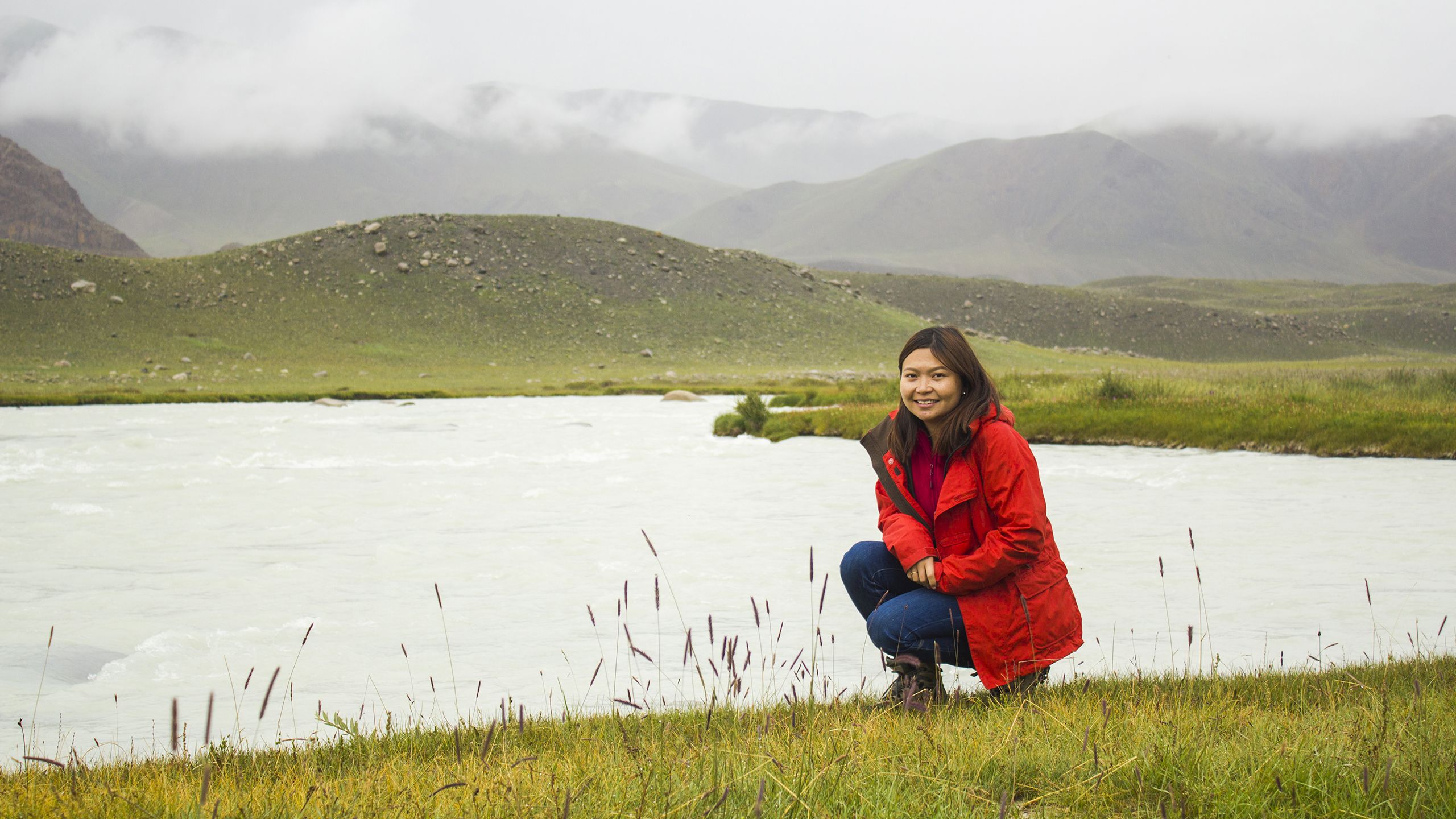This Cambridge Life
The conservationist, the herders and the fashionistas

Respect for the Mongolian landscape is engrained within her, says Onon Bayasgalan. Her work is helping herders in her home country to preserve livelihoods and lands that are under threat from the luxury fashion industry.
I would watch as my grandmother sprinkled milk to honour Mother Nature before breaking the soil to plant seedlings. Respect for the natural world was something my grandmother had grown up with, and in turn taught me. It’s a mentality that is entwined with Mongolian culture.
The Mongolian landscape is vast, harsh and untamed. Crucially for the nomadic herders who live there, it’s not partitioned off into pockets of land. Herders make up 40% of the population and being able to roam freely and graze goats is essential for preserving their livelihoods.
Onon wearing a traditional Mongolian dress called 'Deel'
Onon wearing a traditional Mongolian dress called 'Deel'
The herders are vulnerable to exploitation during the two-month ‘combing’ season when cashmere is gathered from the goats. They rely predominantly on cashmere for their income and it’s very much a buyers’ market, with middlemen using psychological tactics to persuade the herders to sell at a lower price for fear of the price dropping further.
Under pressure to produce more cashmere for the fashion industry, the herders increase their herds to sizes that the landscape cannot sustain indefinitely. Over time, the grasslands are becoming deserts – it’s estimated that 70% has now been damaged, mostly due to overgrazing. Larger herds mean less food for the goats, lowering the quality of cashmere, which fetches a lower price at market.
I helped set up the Sustainable Cashmere Project while working for the Wildlife Conservation Society in Mongolia. The project promotes sustainable herding while protecting the livelihoods of herders. We established quality and sustainability standards and taught the herders techniques, such as sorting cashmere by colour and combing it in a specific way to increase the value of the wool, which reduces the need for larger herd sizes.
Onon wearing a scarf made using sustainable cashmere.
Onon wearing a scarf made using sustainable cashmere.
Projects like this require personal relationships built with time and trust. Over a period of four years, I would regularly stay with the same community of herders. I listened to their stories, shared meals with them and slept in their yurts – in the winter the temperatures would drop to –40°. Every time I returned to the community, I was reminded of why I had chosen to work in conservation.
Collaboration with businesses was equally important to the project’s success. We worked with a fashion house among other private and public sector organisations to develop a model of working that benefited everyone.
The idea that you can separate economics and conservation is an illusion. We need to understand how our desired goals fit into the wider economic system and try to find a win– win solution for conservationists and businesses. Until we do, our victories will be small and localised – only when we work collaboratively will we see widespread change.
Onon in the grasslands of Mongolia.
Onon in the grasslands of Mongolia.
To learn how to do this better, I enrolled on Cambridge’s Masters in Conservation Leadership a year ago as a Cambridge Gates Scholar, the first from Mongolia. One of the most mind-blowing concepts I’ve learnt about is the ‘doughnut economy’. As a cohort we discussed whether it was possible to rethink the whole paradigm of economics. Doughnut economies involve making sure that the economy meets the social needs of humans while respecting the planetary boundaries. I’m convinced that this is the sort of approach we need to sustain land, livelihoods and business.
What inspires me? In a word: Mongolia. I hope one day I will be able to take my grandchildren to the grasslands and say: “What you see before you is how it looked when I was a child – and how it looked when my grandmother was a child.”
This profile is part of This Cambridge Life – stories from the people that make Cambridge University unique.
Words: Charis Goodyear. Photography: Nick Saffell.
Statistics source: BBC business report, Cashmere and climate change threaten nomadic life.




